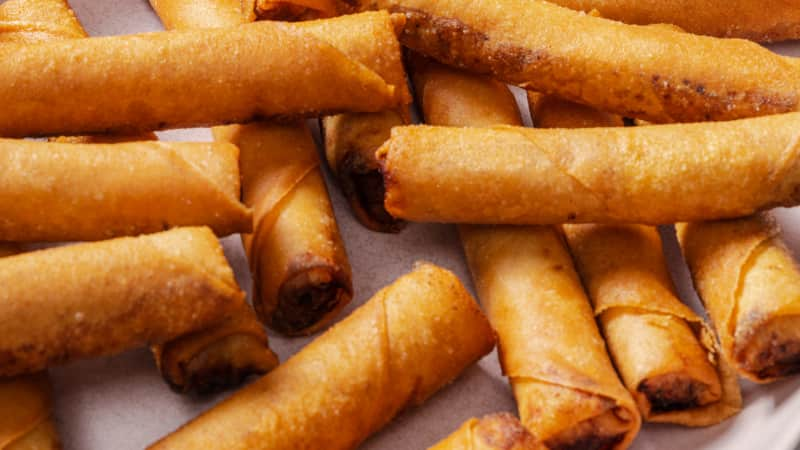Read a recipe for lumpiang Shanghai, and you’ll notice the brevity of the ingredient list: vegetables, ground meat or seafood, a few seasonings and aromatics, and wrappers for rolling. Ask Chicago chef Tim Flores, the co-owner of the Filipino restaurant and bakery Kasama, about the dish, and his description is even pithier: “They’re a no-BS egg roll,” he told me. “Just crispy pork goodness.”
Lumpiang Shanghai (often referred to as “lumpia,” though that term can technically be used to refer to a wide variety of Filipino spring rolls) are relatives of Chinese egg rolls, which were introduced to the Philippines by traders sometime between the ninth and 11th centuries. Today, lumpia are a staple at Filipino holidays and celebrations, where they’re piled onto platters with various dipping sauces. Their straightforward flavor profile makes them a popular and crowd-pleasing snack.




